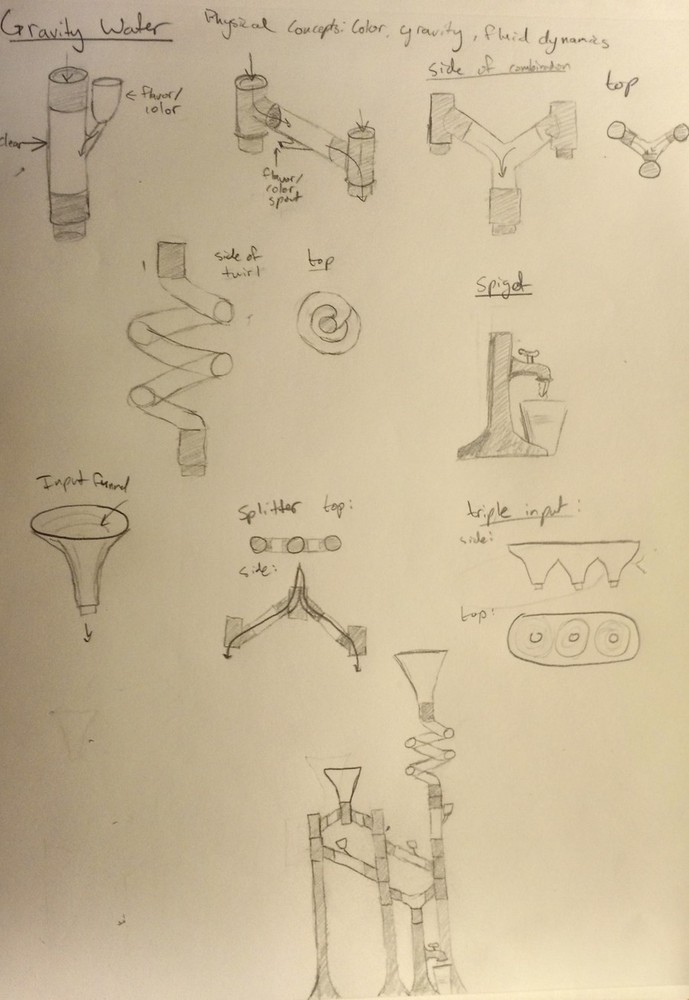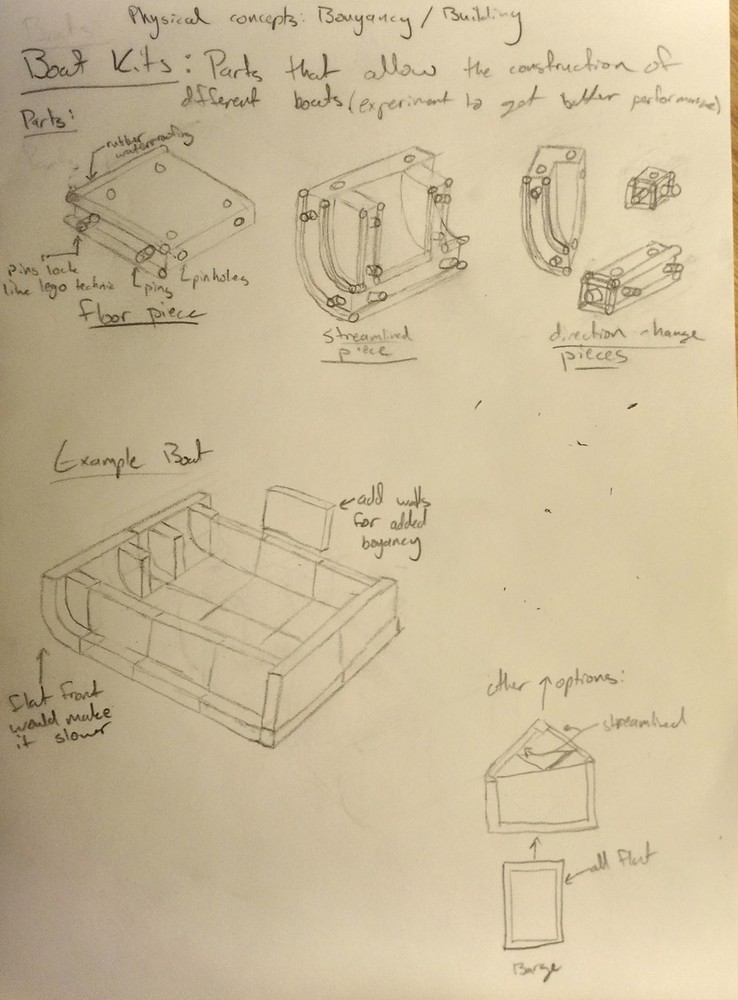Outcome
Context
All three of my ideas are modular toys. As a child I loved playing with Legos, so I extended this modularity to specific real world things such as boats and planes. For my Gravity Water concept, modular marble tracks were also a starting point to explore how other things are affected by gravity.Process
Reflection
When I was a child, I always liked toys that allowed me to build things. I loved legos, paper airplanes, and trucks (I would have "job sites" all around my yard). These taught me basic hand skills, but also fed my interest in building things. Also, toys allowed me to create my own stories. I would take all of my lego sets and make displays with medieval or Star Wars battles.
Interaction
Age Range: 8-15
The would have one or several fuselage pieces along with several stabilizers and wings. Then, the child would attache the stabilizers and wings to the plane using pins that fit into the slots on the sides of the fuselage. The pins can be slid in the slots to move the pieces forward and backward, but there would be enough friction to keep them in place during flight. Most likely, the child's first configuration would not fly very well. Thus, they would have to experiment by changing the position and angle of the pieces. Additionally, the control surfaces on the wings could be changed. Eventually, the child would find a working configuration. Over time, they would begin to notice patterns such as a large angle of attack would cause the plane to stall.
Cost, Durability, and Safety
Cost: $30 - $40, add on kits could have specific parts and cost $10 - 20
Durability: As with all plane kits, durability would be the biggest issue. Because of this, I envision the parts being made of a high density foam with plastic inserts for the pins and slots. This would allow the plane to take numerous hits without becoming un-flyable. However, over time the pieces would accrue many dents and gouges.
Safety: The planes might hurt if thrown very hard at another child, but the intended age range is 8 - 15, so hopefully the children will know enough not to do that.
Interaction
Age range: 5 - 8
The children would build a structure using the provided parts. There would be one or more inputs and one or more output spigots. Some of the tubes in the structure would also have dye canisters attached to them. Ideally these would be Mio-style water flavor containers you can find at the store (this also allows the water to be colored AND flavored). As the water moves through the track the children squeeze the dye containers to color the water. As it flows through the pipes, it may mix with different colored water allowing the children to learn how dyes mix. Finally the water reaches the output spout which would have a reservoir to hold the water and then dispense it. The children could make tracks with the intention of creating water of a certain color or a certain flavor. Additionally, the base kit would only come with red blue and yellow dyes which would force the children to work up from the primary colors.
Cost, Durability, and Safety
Cost: $40 - $50, the flavor dyes would be under $5 and last several runs.
Durability: The pieces would be plastic and thus fairly durable. However, the water flowing through them would be the biggest concern. This toy should be played with outside or in an area that can get colored water on it. Additionally, the parts would need to be easily cleaned. Thus, they would hopefully be made from a dishwasher safe material.
Safety: There are no parts that could be swallowed. However, the parts would have to be thoroughly cleaned to prevent mold which would be unsafe.
Interaction
Age range: 5-10
The child would use the basic pieces to build a water tight boat. Then they could see how well it moves in the water and how much weight it can hold (weights would be included in the kit). Then the child could change the boat in order to improve it. They could use streamlined pieces instead of just the square pieces to make a boat that has less drag. They could also increase the height of the boat sides in order to carry more weight without sinking. Groups of children could have competitions to see who could build the fastest boat or the boat that could hold the most weight.
Cost, Durability, and Safety
Cost: $40 - $50, Additional part sets could be sold for $15 - $25
Durability: The pieces would need to be made out of a strong plastic in order to stand the test of time. However, the weak point would be the rubber sealing pieces and their attachment to the plastic parts. Also, the parts would need to be left out to dry which may be hard if many pieces are used.
Safety: There are small parts in this set, so this would only be for children over 5. Additionally, since this is a water toy, parental supervision would be required. However, children in this age range (5 - 10) are almost always supervised when they are near water (in the bath, at pools, etc).
You can upload files of up to 20MB using this form.


